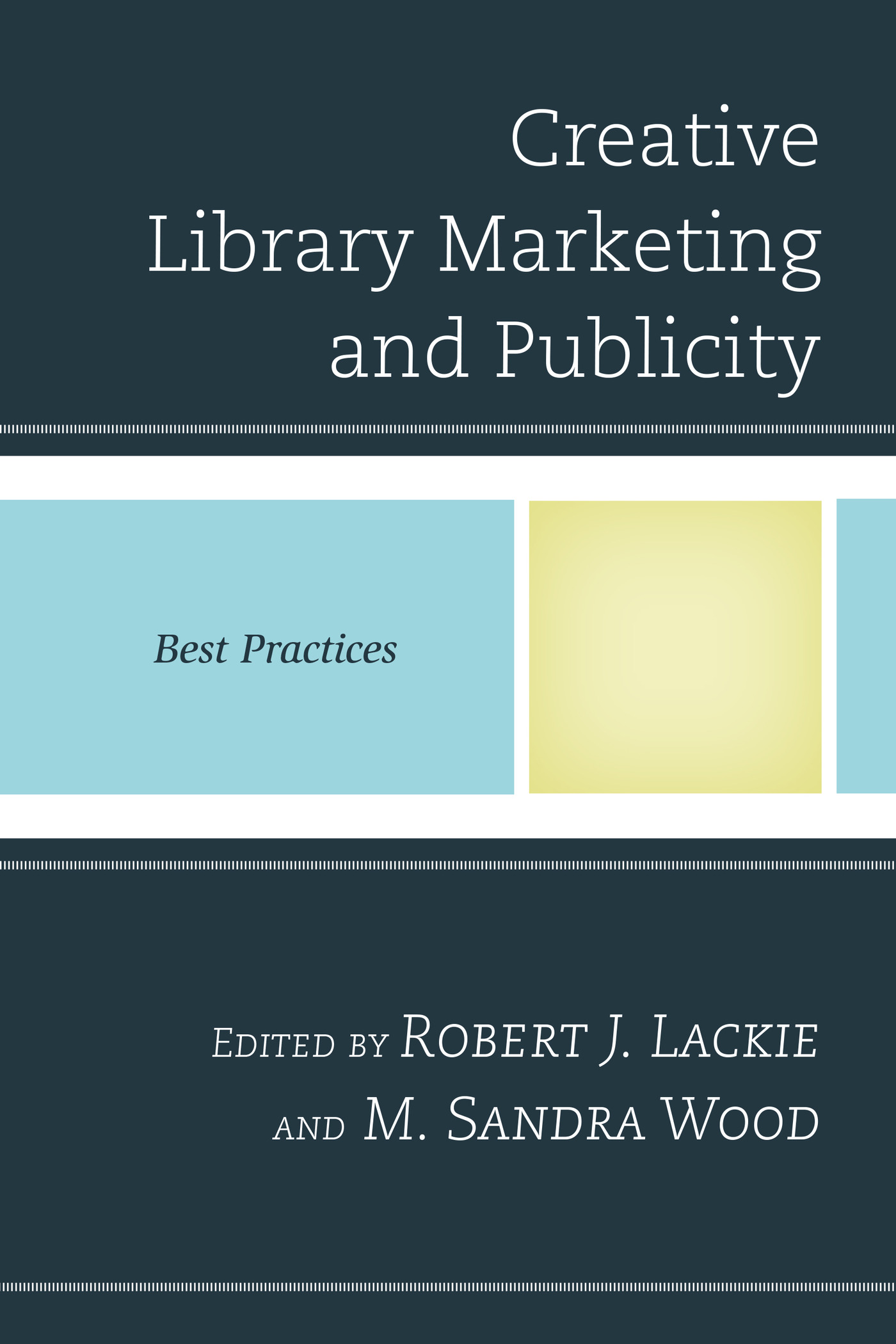Creative Library Marketing
and Publicity
Creative Library Marketing
and Publicity
Best Practices
Edited by
Robert J. Lackie
and
M. Sandra Wood
ROWMAN & LITTLEFIELD
Lanham Boulder New York London
Published by Rowman & Littlefield
A wholly owned subsidiary of The Rowman & Littlefield Publishing Group, Inc.
4501 Forbes Boulevard, Suite 200, Lanham, Maryland 20706
www.rowman.com
Unit A, Whitacre Mews, 26-34 Stannary Street, London SE11 4AB
Copyright 2015 by Rowman & Littlefield
All rights reserved. No part of this book may be reproduced in any form or by any electronic or mechanical means, including information storage and retrieval systems, without written permission from the publisher, except by a reviewer who may quote passages in a review.
British Library Cataloguing in Publication Information Available
Library of Congress Cataloging-in-Publication Data
Creative library marketing and publicity : best practices / Robert J. Lackie, M. Sandra Wood.
pages cm. (Best practices in library services)
Includes bibliographical references and index.
ISBN 978-1-4422-5420-6 (hardcover : alk. paper) ISBN 978-1-4422-5421-3 (pbk. : alk. paper) ISBN 978-1-4422-5422-0 (ebook)
1. LibrariesMarketing. 2. LibrariesPublic relations. 3. LibrariesUnited StatesCase studies. I. Lackie, Robert J., 1966, editor. II. Wood, M. Sandra, editor.
Z716.3.C78 2015
021.7dc23
2015015115
 TM The paper used in this publication meets the minimum requirements of American National Standard for Information Sciences Permanence of Paper for Printed Library Materials, ANSI/NISO Z39.48-1992.
TM The paper used in this publication meets the minimum requirements of American National Standard for Information Sciences Permanence of Paper for Printed Library Materials, ANSI/NISO Z39.48-1992.
Printed in the United States of America
In memory of Michael Scott Wood,
June 1, 1989February 19, 2015
Preface
When speaking with any library professional about the importance of public awareness in regard to their librarys continued existence, the conversation will inevitably lead to discussions about the necessity of marketing and promoting library resources and services in order to gain important visibility and support. The American Marketing Association (AMA) defines marketing as the activity, set of institutions, and processes for creating, communicating, delivering, and exchanging offerings that have value for customers, clients, partners, and society at large (approved July 2013, https://www.ama.org/AboutAMA/Pages/Definition-of-Marketing.aspx). Like many public institutions, all types of librariesacademic, public, and school librariesrelate to the AMAs definition and attempt to promote themselves and their services and programs in various ways, with many developing authentic marketing plans and successful promotional tools to establish and build positive relationships with their various constituents. And in fact, by effectively incorporating innovative and creative marketing, promotional, publicity, and advocacy efforts, whether through traditional or nontraditional methods, ideas, and campaigns, many libraries have improved their reputations as dynamic, inviting institutions and gained important, continuing (loyal) support.
Obviously, marketing has a significant impact on and can even positively change how the community perceives a library and all of its resources. Conversely, libraries who do not proactively promote themselves and their resources and services to their users and supporters face the very real risk of losing their users and supportand maybe even eventually closing their doors. However, even though library personnel are being charged with creating marketing and promotions plans and getting buy-in from their constituents, most library professionals and paraprofessionals do not have the education or experience neededand marketing is probably not high on the list of priorities within their normal job descriptions. Many academic, public, and school library professionals are genuinely at a loss when they are suddenly tasked with dealing with vital promotion, publicity, branding, and advocacy prioritiesall important aspects of marketing their libraries.
Creative Library Marketing and Publicity: Best Practices focuses on some of these most visible aspects of marketing for librariespromotion, publicity, branding, and advocacy. Drawing on the best practices, experience, and expertise of library personnel from public, academic, and school libraries, this volume brings together a variety of marketing plans and creative methods for promoting libraries and their programs and services to a twenty-first-century audience. All library employees should be able to take away something from these creative, successful efforts and be able to apply tips, techniques, and best-practice suggestions to their own library marketing efforts.
How the Book Is Organized
Creative Library Marketing and Publicity: Best Practices is an edited book of twelve chapters, with authors drawn from small to large public, academic, and school libraries, systems, and organizations. Each chapter describes a librarys successful experience with marketing, branding, or promoting a library service or program, providing information about planning, actual promotion techniques, and evaluating the success of the plan or promotion methods utilized. Most importantly, chapter authors include tips and best practices for readers. Many of these ideas and techniques are applicable across the board, so the chapters within this volume will help you implement similar methods to promote your library services and programs and spark different and unique uses for these techniques.
In chapter 1, Building a Foundation for Marketing Success, Jeannie Allen, at Kitsap Regional Library in Washington, discusses in detail the research process and questions every library professional should answer in order to develop solid marketing goals that will help gain a deeper understanding of the needs of any library organization and the unique community it serves. Instead of diving into somewhat clever campaigns that only gain the library a headline or two, she instead walks us through the process of developing a marketing plan that will do much more than just promote a product or service, but one that will build awareness of the library in a way that no single approach can.
In order to build faculty awareness, interest, and engagement in open access publishing, supporting their universitys newly adopted Open Access Policy, in chapter 2, Conversations: Building Relationships and Using Constituent Voice in Outreach, Letha Kay Goger discusses how the University of California, Merced Library enlisted faculty voices for a video campaign designed to address issues of promise and concern around publishing with an open access model. This chapter details the librarys outreach and promotion campaign, including steps taken to engage faculty, dissemination, community response, and suggestions for building a similar library campaign.
Brent Bloechle discusses in chapter 3, Plano Public Library System: Building a Social Media Presence, how PPLS in Texas began with one blog in 2008, but as patrons migrated to new social media platforms, it followed along to meet their specific needs, such as creating the Job Center blog during the economic downturn. Details on how PPLS built and maintains a successful social media program that currently includes active participation on six blogs and seven social media sites, including Instagram, are provided. Strategies for staffing and maintaining the levels of support necessary for this broad social media presence, as well as guidelines for posting and recommendations for content, are also included in this chapter.
Next page
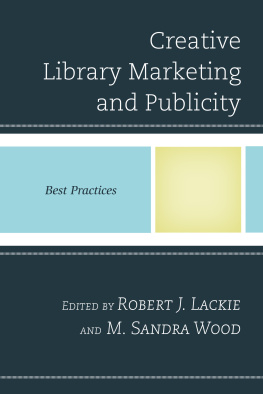
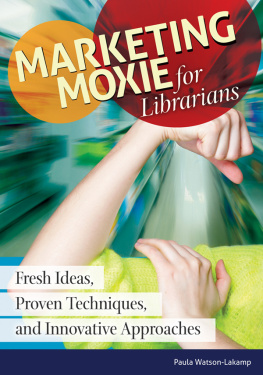
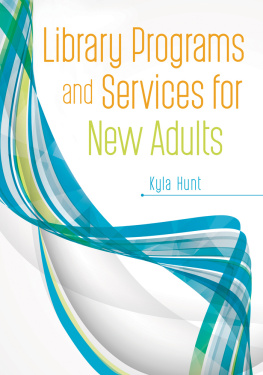
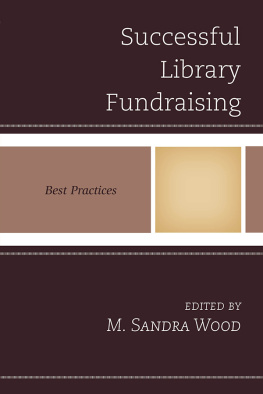
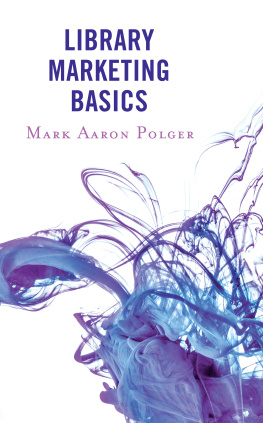

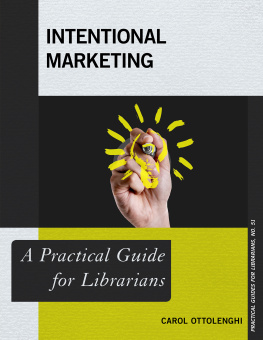
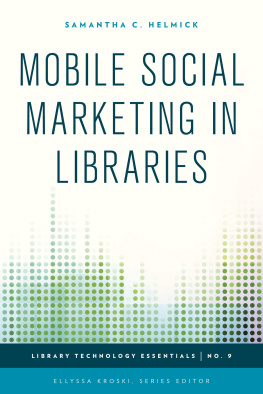

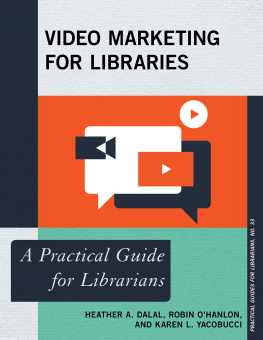
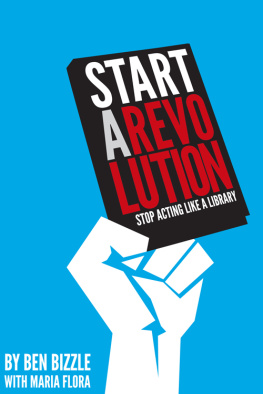
 TM The paper used in this publication meets the minimum requirements of American National Standard for Information Sciences Permanence of Paper for Printed Library Materials, ANSI/NISO Z39.48-1992.
TM The paper used in this publication meets the minimum requirements of American National Standard for Information Sciences Permanence of Paper for Printed Library Materials, ANSI/NISO Z39.48-1992.